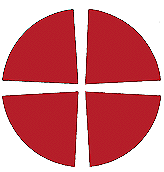 Derby
Methodist
History
Derby
Methodist
History

 Derby
Methodist
History
Derby
Methodist
History

As the Reign of Queen Victoria came to an end there was a flurry of activity in church building for the new Century. Quite a few went up and came down again in Derby before the Century was finished. These no longer exist: Osmaston Road (was in the Primitive Methodist Derby Circuit No.3 in 1901); Litchurch Chapel in Cotton Lane (the congregation moved to Davenport Road) and Albion Street Mission Room (both in Green Hill Circuit in 1901).
Any information about the above and the following chapels and churches is welcomed. Davenport Road was a Methodist church in Derby South during the 1930's, and is now an evangelical church. Parliament Street Chapel was in Derby South in 1890. Could this have been Dunkirk? Mount Carmel Street (Methodist New Connexion?) and Graham Street Primitive Methodist, who had a very good football team.
A fine chapel was opened in 1900 on Nottingham Road. The 'Prims' and the Wesleyans eventually united in 1949 to become the Borrowash Methodist Church. The result was a strong Methodist presence that provided a major outreach in the district with a youth club, famous pantomimes, Young Wives Group, a very large Sunday School, Boy's Brigade and Girl's Brigade. It is still active today within the Derby Circuit.
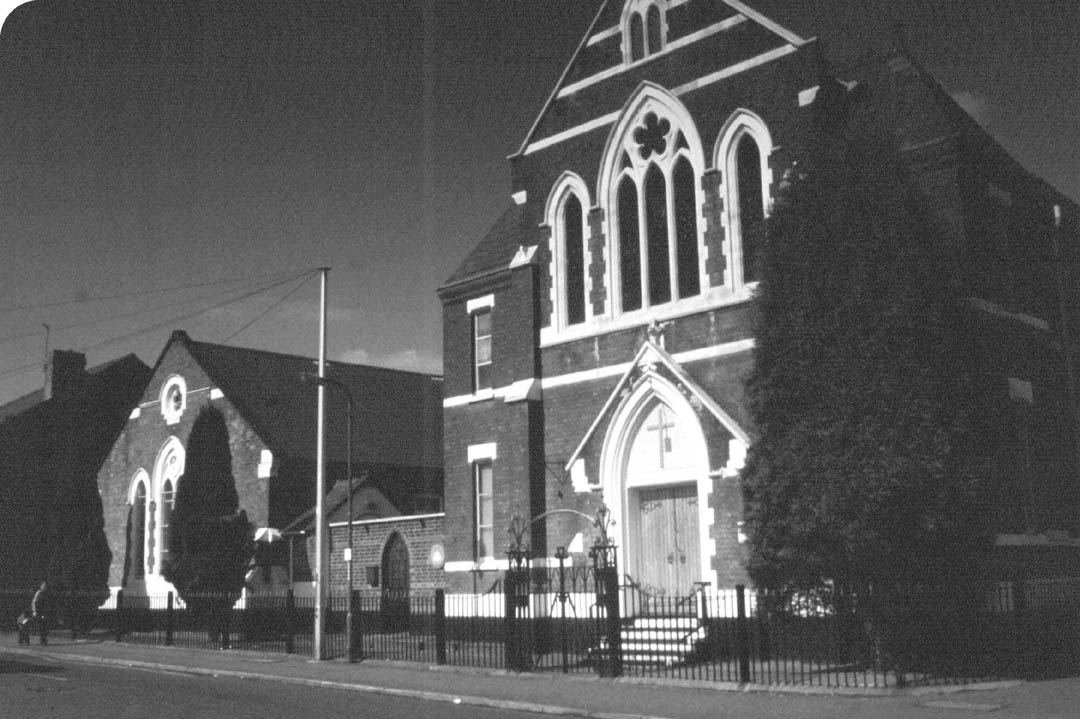
A room in Church Street was used by the Society and a Sunday School formed in
1877. The population growth in Old Normanton needed bigger premises. Soon after
a school chapel was built in 1880 initiated by the parent church in Traffic
Street. Finally a primitive church opened in 1901. Although closed in 1962, it
was taken over by the Serbian community and is one of many examples in Derby
that continues use as a church.
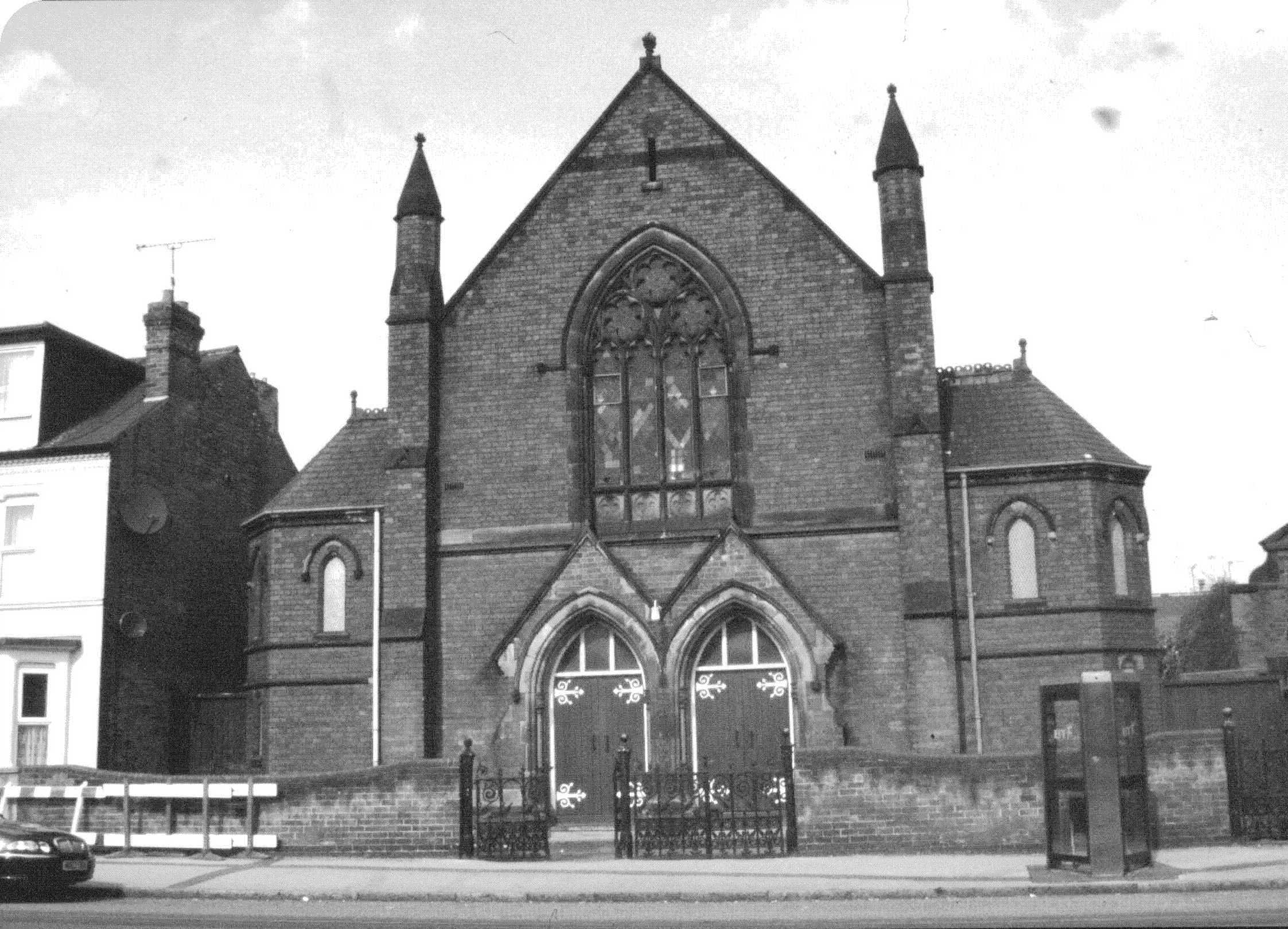
This cause owed its existence to the London Road Mission Band. In the summer of 1886 its members held open-air meetings at Osmaston after services had closed at Canal Street Chapel.
Cottage services were then held through the winter until a joiner's shop at the end of Eton Street, overlooking the canal, was made available to rent. A flight of wooden steps, literally over the canal, led up to the room.
All this good work and a thriving Sunday school led to a new iron chapel opened in 1890. Continued growth led to a grander Gothic Church, at the same site on London Road, which opened in 1901.
When this church closed in 196? The congregation moved to the Alvaston Methodist
Church in Flint Street.
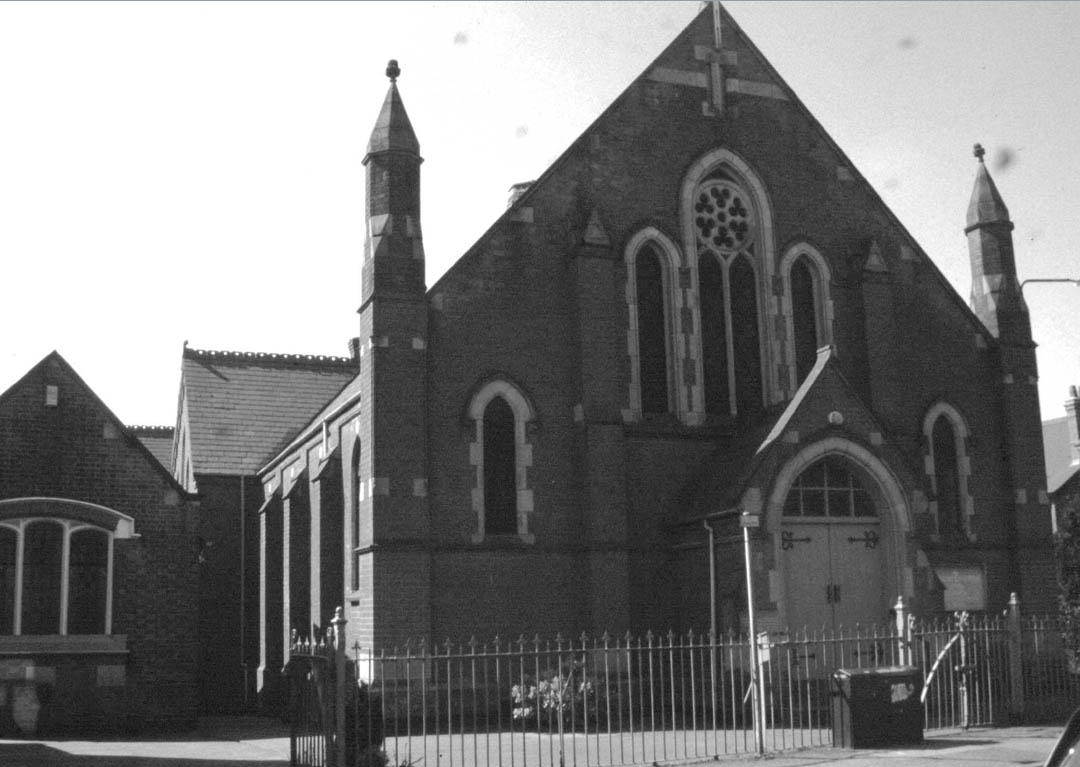
The matter of Methodist preachers administering the sacraments caused much heart searching. A working agreement was reached at the 1795 conference in the 'Plan of Pacification'. It left the final power with the preachers in conference. Some democratic rights were conceded to the Methodists who were allowed to have the sacraments administered by their own preachers.
Most Methodists agreed to the plan. A few did not - the most prominent being Alexander Kilham. He was far ahead of his time and a thorn in the flesh of the slow moving main body of Methodism. He was expelled in 1796 and three other ministers along with many lay officials joined him in forming the Methodist New Connexion. It was never large but always progressive.
The Methodist New Connexion united with the Bible Christians and the United Methodist Free Churches to form the United Methodist Church with their first conference being held in 1907.
The Methodist New Connection may be classed among the oldest Nonconformist
bodies in the town of Derby. An example was the Methodist New Connexion chapel
built in 1824 in Devonshire Street. The New Jerusalem Church in London Street
was purchased from the Swedenborgians by the New Connexion and used from 1836
until 1901. In 1898 it was decided that the building was in a poor state and
plans were put in place for a new chapel in Dairyhouse Road which opened in
1901.
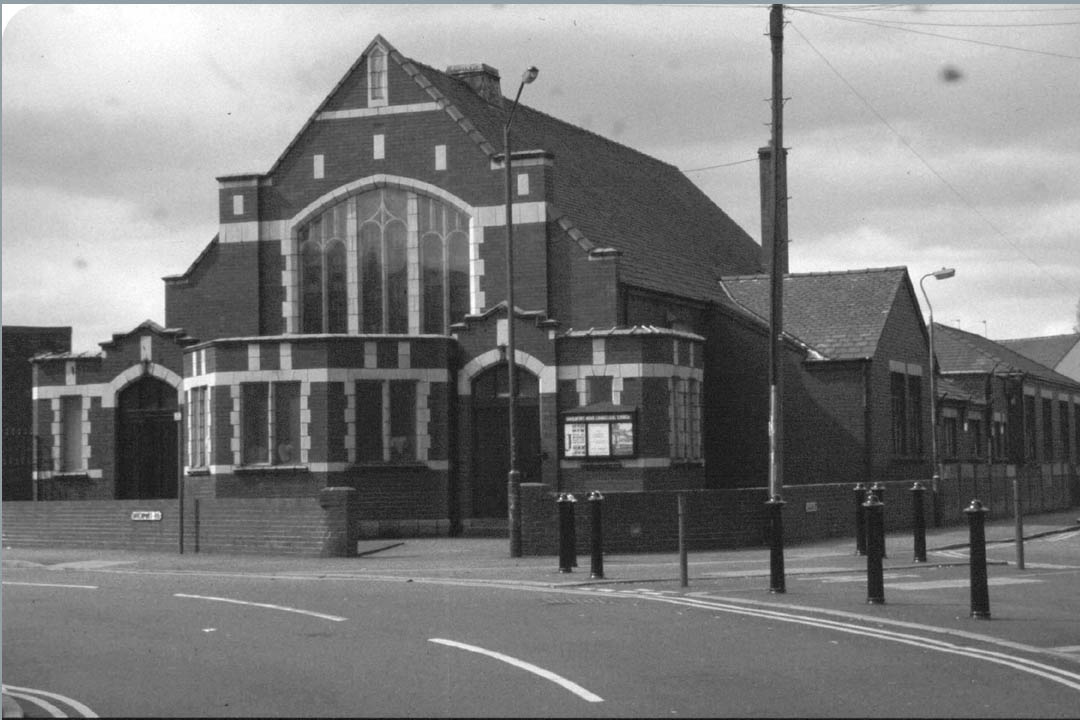
Davenport Road was a Methodist church in the Derby South circuit during the
1930's. When Litchurch closed down the congregation went to Davenport Road. It
was taken over by the Railway Mission in about 1970 and reopened as an
Evangelical church. The Methodists members and assets then went to Allenton
Methodists in Flint Street.
Previous efforts at total reunion had failed but led to a better understanding, and the first great reward came in 1907 exactly 50 years after that of the United Methodist Free Church when the United Methodist Free Churches, the Bible Christians and the Methodist New Connexion joined forces to form the United Methodist Church.
This amalgamation was hardly completed before tentative steps were taken towards an even greater union. The Primitives and United Methodist Conferences all stated the intention to make a serious effort to unite in one church organisation. This single church would become a great evangelical force throughout the country.
The final coming together took another 25 years before the Primitive Methodists, the United Methodists and the Methodists united to form the Methodist Church.
After the First World War there was a decline in attendance at Primitive churches. In many places there were two churches when one would suffice, duplication of effort, and overlapping circuits with the Wesleyans. After extensive negotiations, and an Enabling Bill through Parliament, the three Conferences held their last separate sessions in the Summer of 1932. The last Primitive Methodist Conference was held at The Bourne Chapel, Kedleston Street, Derby.
The three adjourned Conferences met at the Uniting Conference, which opened in September 1932 in the Royal Albert Hall, London. Apart from the Independent Methodists, the Reform Union and a few very tiny organisations, 1,000,000 were united as one Church.
Despite the amalgamation things were still not rosy at grass roots level. There was still 'us' and 'them' with the Primitive and Methodists.
Prior to World War II a group of young people, at Kedleston Street Primitive Methodist Church, played tennis on Saturdays on the hire courts in Markeaton Park.
When the war started Percy Thrower, then Derby Parks Superintendent, dug up the tennis courts to plant vegetables for the 'Dig for Victory' Campaign. The young people from Kedleston Street heard that a similar group from King Street Methodist Chapel had their own tennis courts off Kedleston Road. We wondered if we could use them at certain times so a request was put forward. The answer was 'Yes, come on Saturday.'
As time went by we became more involved and even held a Youth Weekend on the courts. From this beginning, came the Circuit Youth Group and with the help of local preachers we began to take services in the circuit churches.
But most of all was the fact that Kedleston Street Primitives and King Street Methodists became friends thanks to the 'Dig for Victory' campaign.
A safe belonging to King Street had been under the stage at Allestree St John's, for nigh on 40 years, unopened.
In 2003 the stage recess was completely cleaned out and a key was discovered. It fitted the safe and revealed Victorian documents relating to many of the churches that were in the King Street Circuit round about 1820 to 1870.
The discovery provided interesting material about Methodism in Derby and District that further enhances the knowledge of certain churches and events.
Among other items found in the safe were:
It is possible that John Wesley visited the chapel in 1780 and other evidence, dated 1817, suggests that the Draycott Chapel was built in 1790. The date for the opening of this Chapel is still to be established. In particular the fate of the Wesleyans at Ockbrook.
On coming of age in 1808 a Mr Wallis bequeathed to the people of Ockbrook a piece of land for the building of a Chapel. The Chapel was built and the Wesleyans enjoyed its use throughout the life of Dr Wallis until he died in 1869.
It transpired that he did not have that right. His relations wanted the land back and a discourse by letters proceeded for more than a year with some amazing examples of plain speaking culminating in the solicitor threatening the Wesleyans with the Law if they did not give up the Chapel.
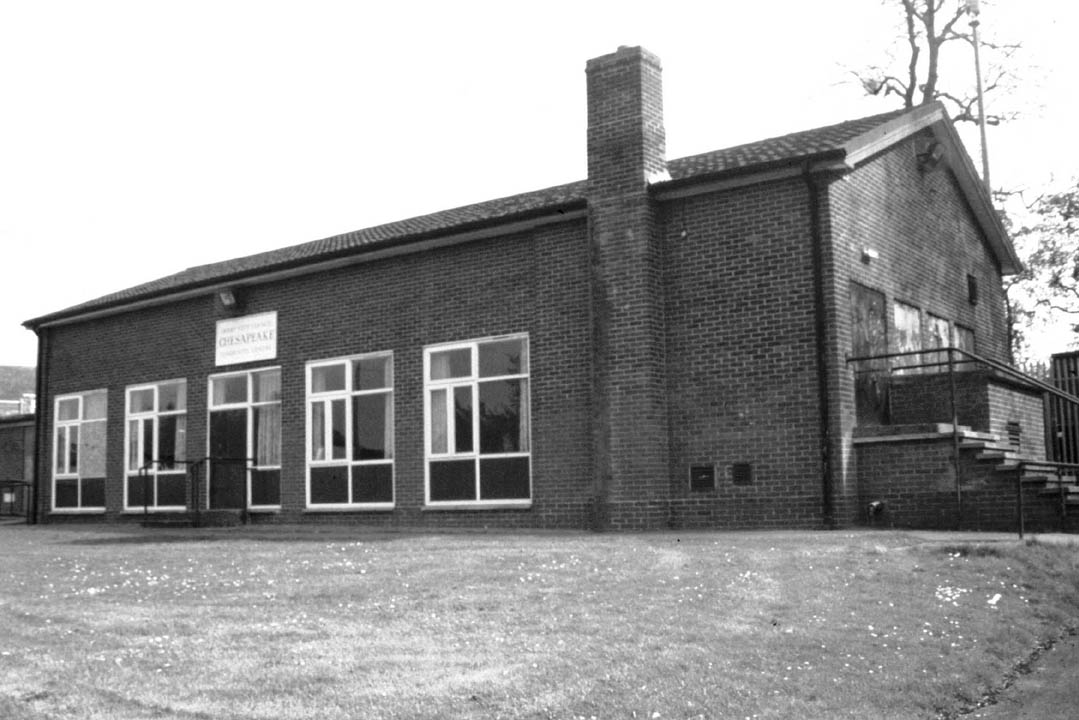
A new church opened in 1956 for a new council housing estate in Chaddesden. It seems there was not sufficient demand to sustain a Methodist church in this location. It is now the Derby City Council Chesapeake Community Centre.
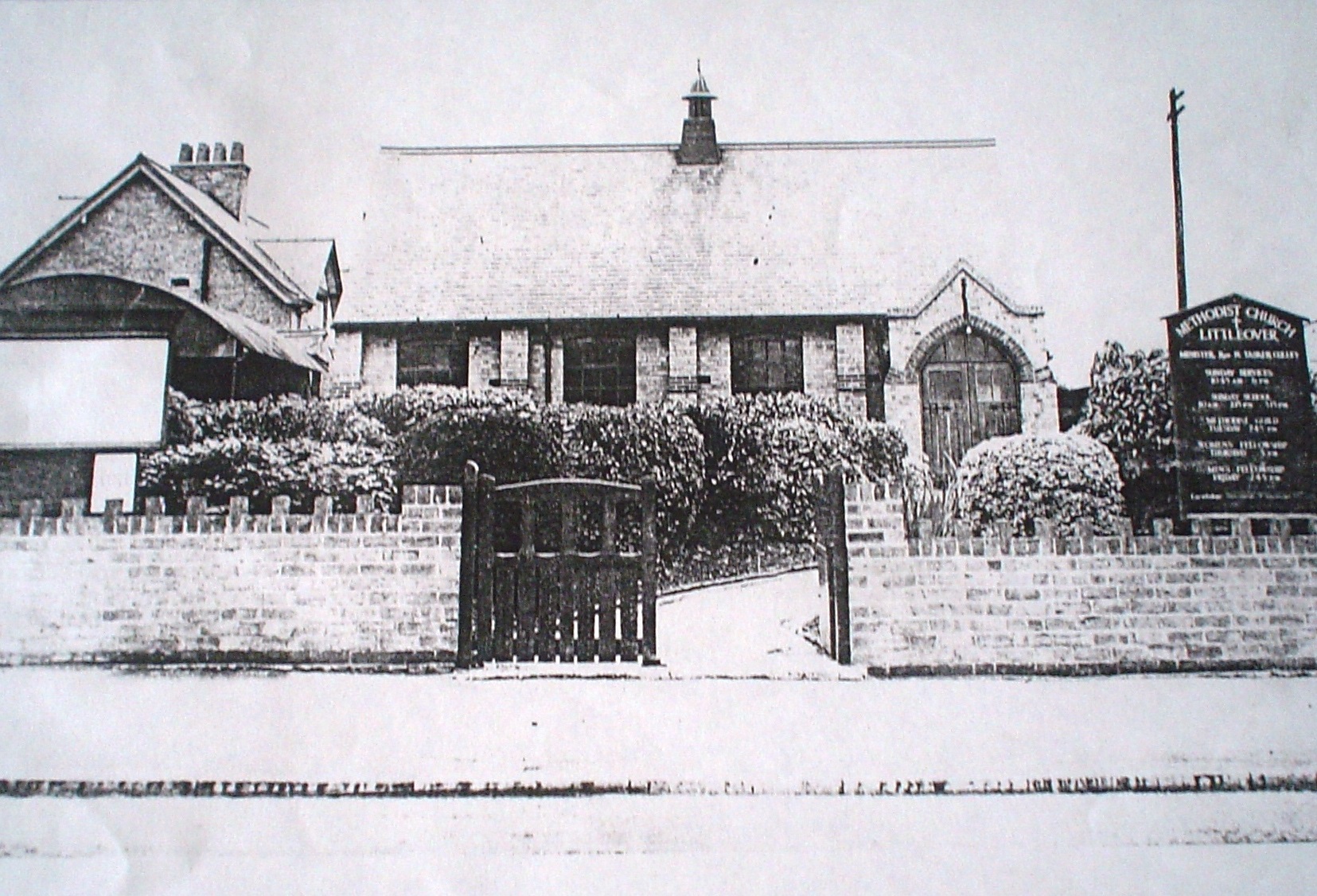
Records show a Wesleyan chapel at least as early as 1825 and the first Primitive chapel in 1880. Neither has been located. The second Primitive Chapel, shown here, was on Burton Road. It closed in 1957 and was demolished in 1965.
The Littleover Methodist Church on Constable Drive opened in 1958. This church is still active in the Derby Circuit.
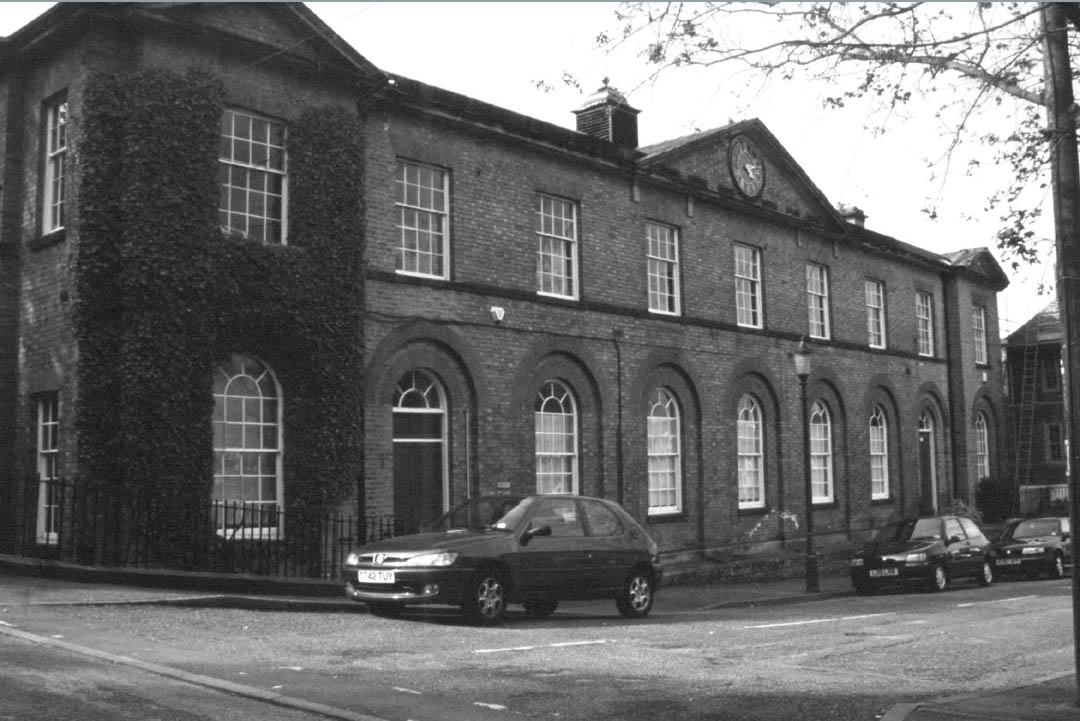
Records show that Darley Abbey was part of the Derby circuit in 1826 and in the King Street Circuit in 1895. It is known that meetings were held in the schoolrooms, (opened 1826 and shown here). It would seem they were used for more than 100 years until Westleigh House, no. 1 Old Lane, was purchased in 1935 by Tom Nelson Senior. Part of the house was used as a Methodist Church. The Sunday school started in 1938. Becket Street had a branch of the united Methodist Free Church in Darley Abbey before 1863. The Methodist Church, until recently active in the Derby Circuit, opened in May 1958.
The 50's and 60's were a good time for Methodist Youth Clubs.
Some members attended the Adventure holidays organised by the Methodist Youth Department. The first was held at Cliff College Calver in 1961. The next adventure holiday was held at Plas Yr Antur, Fairbourne, Wales the following year. At this holiday a promotional film was made for MAYC.
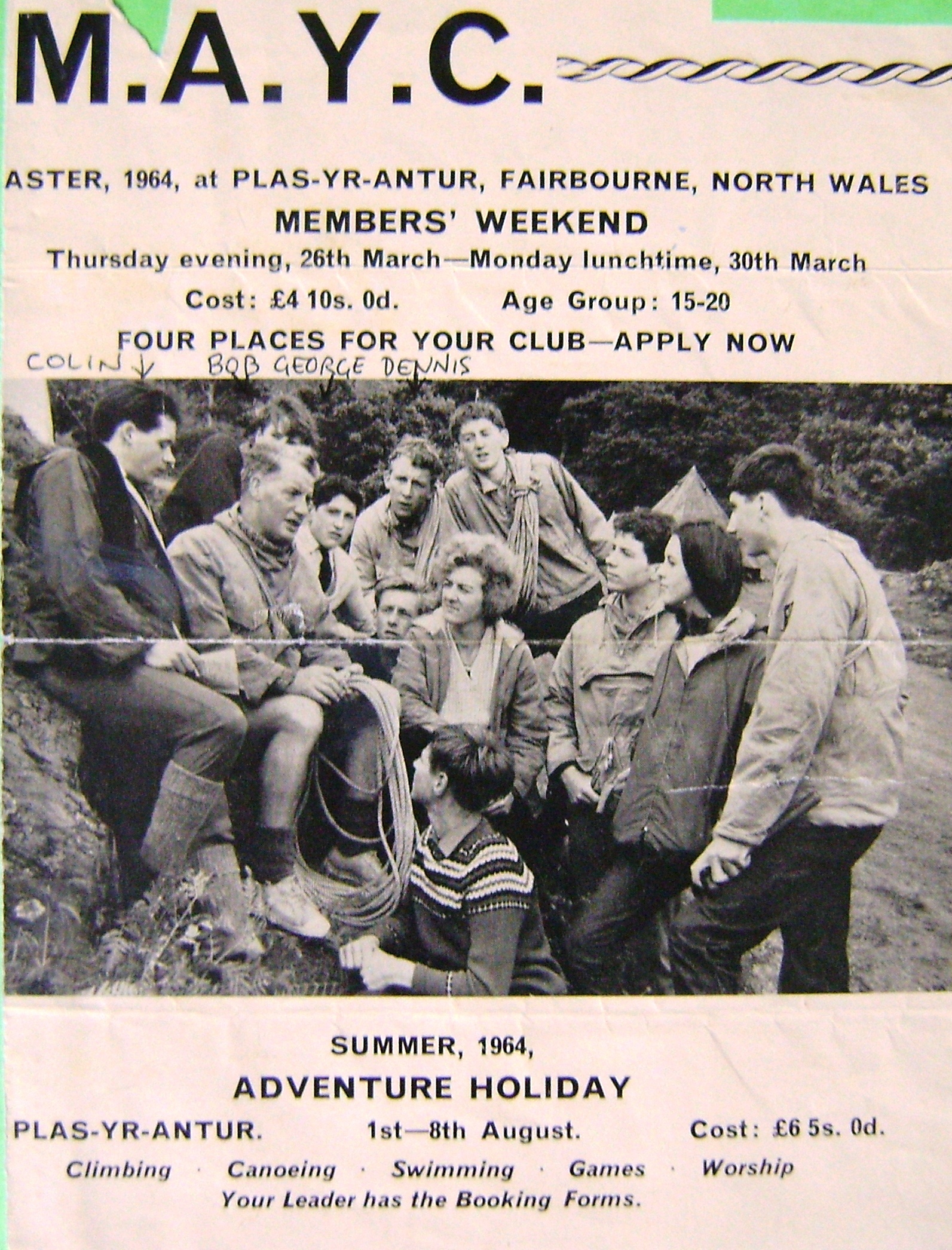
You may have attended a Methodist youth club after school in mid-week. Derby and District had a thriving Methodist youth organisation with as many as 14 Methodist Youth Clubs. It was like a dating agency with many a young man eventually marrying a girl they met at the MAYC youth club.
A darts and table tennis league existed as a form of outreach with clubs regularly visiting each other en-masse to play the games and also meet other young people. A typical fixture card is shown here:
|
|
||||||||||||||||||||||||||||||||||||||||||||||||||||||||||||||||||||||||||||||||||||||||||||||||||||||||
| LATER WINNERS OF THE | LATER WINNERS OF THE | |||
| TABLE TENNIS LEAGUE | DARTS LEAGUE | |||
| Allenton | 1965-66 | New Normanton | 1965-66 | |
| Dunkirk | 1966-67 | New Normanton | 1966-67 | |
| New Normanton | 1967-68 | New Normanton | 1967-68 | |
| Littleover | 1968-69 | Alvaston | 1968-69 | |
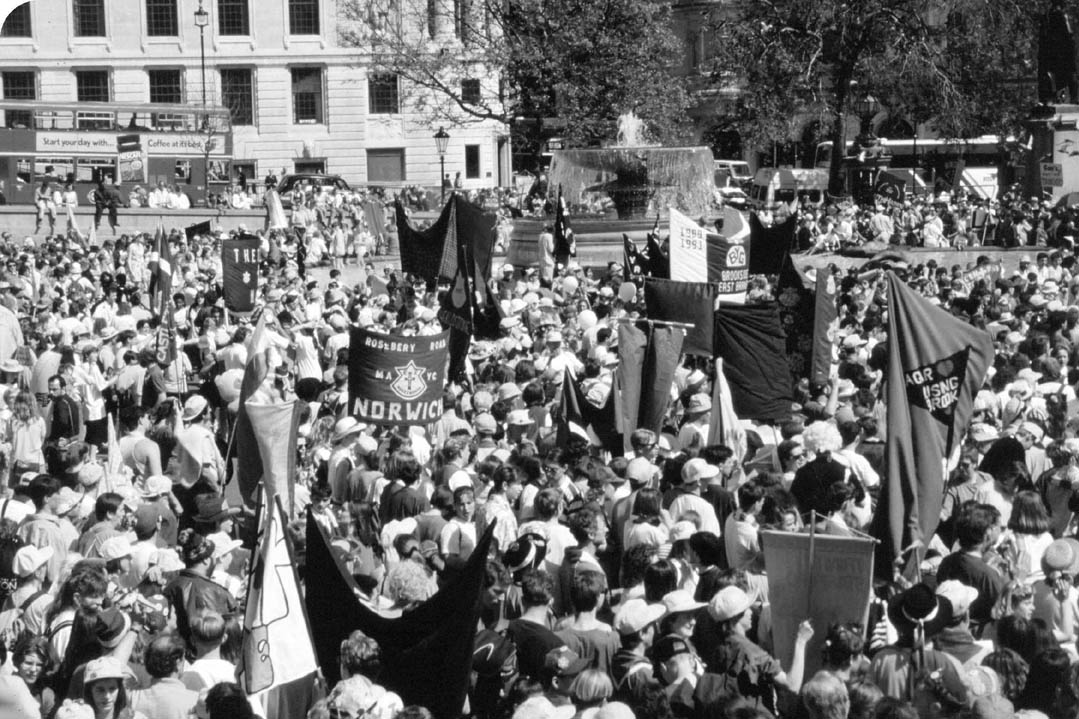
The end of the Second World War was followed by the creation of many Methodist youth clubs across the country. The launch of the "Good Ship MAYC" on Saturday June 2, 1945 was the public inauguration of the Methodist Association of Youth Clubs at Westminster Central Hall and the Royal Albert Hall under the leadership of the founder Rev. Douglas A. Griffiths.
By the 1960's there were more than 14 Methodist Youth Clubs in Derby and District. The highlight of the year was London Weekend with as many as 15,000 young people sleeping in church halls gathering in London for numerous events and especially the show in the Albert Hall on Saturday in May. This often clashed with the FA Cup Final and when Norwich were in the final sporting the same colours of green and yellow as used by MAYC it confused the police who were not used to getting smiley faces stuck onto their uniforms.
One of the most exciting developments in the 1980's was MAYC orchestra and singers, directed first by Paul Leddington Wright. The orchestra and singers have since held concerts in major concert halls around the country. With so many talented young musicians it was difficult to get into the MAYC orchestra and choir. Auditions were held each year and once in a player could look forward to playing for many years in the Albert Hall and at many other prestigious locations.
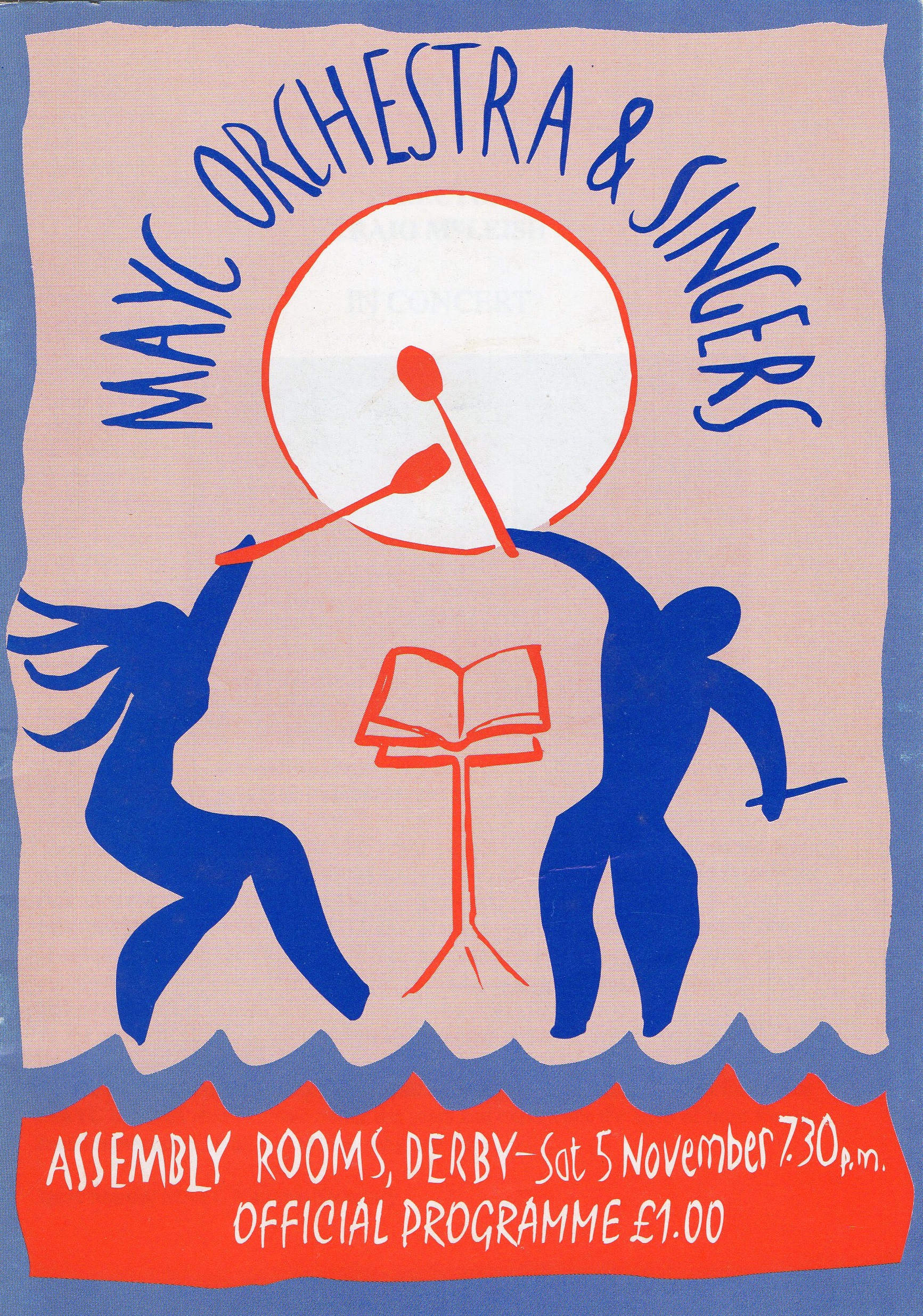
London Weekend 19-21 May 1995 held the Sunday service in a large tent on Battersea Park for the fiftieth anniversary of MAYC. The BBC Songs of Praise went out live. It was a wonderful witness by MAYC members young and older and was voted the best Songs of Praise in 1995. There were three young people in the orchestra and choir from St John's Methodist church Allestree, one playing violin and two singing. The Songs of Praise service can still be seen on the Methodist MAYC website, an exciting occasion well worth another viewing.
Methodism originated in the 1730s as part of the great evangelical revival which changed the face of popular religion in Britain and North America. Its first leaders were the Anglican clergymen John and Charles Wesley assisted by itinerant preachers. With the separation of Methodism from the Church of England by 1800, the itinerant preachers were ordained as ministers and were assisted by local preachers recruited from the laity. Since 1744 the policy-making body of Methodism has been the annual Conference. The early Conferences consisted of itinerant preachers, to which were added lay representatives in the nineteenth century.
In common with most denominations, the status of Methodist women was, until recently, subordinate to that of men. From the earliest years, however, women have performed or shared in several important functions relating to worship and other areas of Church life.
From as early as 1742, female class leaders were appointed at the Foundery Chapel in London. Both sexes were encouraged to speak of their spiritual life in public, worship, and exhort fellow Methodists to faith and repentance. Some women, like Ann Cutler (1759-94) and Hester Ann Roe-Rogers (1756-94), enjoyed such a reputation for holiness that their lives were made the subject of devotional works. Other areas of early Methodist life in which women played a leading role included education (with particular regard to the Sunday School movement), and visiting the sick. The wives of itinerant preachers were also held in high regard and by the end of the eighteenth century were considered to have a vital supporting role in their husbands' ministries.
One of the most important and controversial developments in early Methodism was the decision to allow female preaching. By the 1760s, Sarah Crosby (1729-1804) and Mary Bosanquet-Fletcher (1739-1815) had, with John Wesley's reluctant approval, made the transition from `exhorting' to preaching the gospel. It is not known how many women preachers there were in eighteenth-century Methodism but contemporary sources indicate that their number was not insignificant. It was an example that the Church of England was not to follow until after the Second World War.
After John Wesley's death in 1791, the attitude of the Wesleyan Methodists towards the concept of a female preaching ministry changed from reluctant acceptance to positive discouragement. From 1803, women were effectively restricted to addressing their own sex and then only under strict conditions. Inevitably, some women ignored the obstacles placed in their way and continued to preach wherever they saw a need. The most famous was Mary Barritt-Taft (1772-1851), who was responsible for the conversion of a number of later well-known Wesleyan ministers.
In the first half of the nineteenth century Methodism split into several bodies and it was the breakaway churches which made the most use of their female membership. The Primitive Methodists and Bible Christians (established in 1811 and 1815 respectively) in particular made extensive use of the novelty value of female evangelists in expanding into new areas. Even after the practice of employing female itinerants in the non-Wesleyan churches died out in the closing decades of the nineteenth century, women continued to act as local preachers in all the major Methodist denominations and in overseas missions.
The status of women began to improve towards the end of the nineteenth century. In 1890 the Wesley Deaconess Order was established to fill the need for outreach among the female poor and was used extensively in the large inner-city missions. Deaconesses were also employed in overseas work from 1894. The Primitive Methodist and United Methodist Free Churches established similar orders by the end of the century.
In 1910, the Wesleyans officially lifted the ban on women preaching to mixed congregations and in 1918 officially granted them the same rights and conditions as male local preachers.
The move towards sexual equality within the Church gathered pace after the union of the major denominations in 1932 to form the Methodist Church of Great Britain. The Women's Fellowship was established in 1944 as part of the Home Mission department to consider problems vital to women. The Fellowship has been particularly active in social issues.
The first women to be accepted into the full ministry of the Church were ordained at the Bristol Conference in 1974. Another major landmark in achieving equality was reached in 1993 when Kathleen Richardson, who had already achieved the distinction of being the first female District Chairperson, was elected the first woman President of the Conference, thereby becoming the head of the Church during her year in office.
John Wesley lived to be nearly 88 at a time when there was no health service and only the wealthiest could afford the services of a doctor. Ordinary people had to take responsibility for their own health and that was the case until the National Health Service was introduced.
As medicines and health care became free we have become more and more dependent on others for our health until we have reached crisis point and the system can no longer cope. People have started to look at alternative therapies for their cures and as health promotion.
Wesley wrote his Primitive Physic (subtitled - an easy and natural method of curing most diseases) over 250 years ago. Much of what he wrote seems comical to us today but a great many of his remedies (slightly modified) can be found in modern books. He advocated the use of herb/substances or, as he called them, 'concoctions' that we still use today.
As a nation we are being urged to take preventative measures. School children now have water on their desks as research now seems to show that 5% dehydration = 30% reduction in good brain memory function. The National Fruit Scheme has just been launched to provide a piece of fruit for every 3-6 year old in school. At every turn we are encouraged to do more exercise, eat 5-7 portions of fruit and vegetables a day etc. All, of which, Wesley advocated 250 years ago.
In his many rules the great rule of eating and drinking is most important and worthy of production in full -
| 1. | Suit the quality and quantity of the food to the strength of our digestion; to take always such a sort and such a measure of food, as fits lightly and easy on the stomach. |
| 2. | All picked, or smoked, or salted food, and all high seasoned is unwholesome. |
| 3. | Nothing conduces more health, than abstinence and plain food, with due labour. |
| 4. | For studious persons, about eight ounces of animal food, and twelve of vegetables in twenty-four hours is sufficient. |
| 5. | Water is the wholesomest of all drinks; quickens the appetite, and strengthens the digestion most. |
| 6. | Strong, and more especially spirituous liquors, are a certain, though slow, poison. |
| 7. | Experience shows, there is very seldom any danger in leaving them off all at once. |
| 8. | Strong liquors do not prevent the mischiefs of a surfeit, nor carry it off so safely as water. |
| 9. | Malt liquors (except clear, small bear or small ale of due age) are exceedingly hurtful to tender persons. |
| 10. | Coffee and tea are extremely hurtful to persons who have weak nerves. |
| 'Use a plain diet, easy on the digestion; and this as sparingly as you can, consistent with ease and strength. |
| 'Use as much exercise daily in the open air as you can without weariness. |
| 'Sup at six or seven on the lightest food; go to bed early and rise betimes. To persevere with steadiness in this course is often more than half the cure. |
| 'Walking is the best exercise for those who are able to bear it; riding for those who are not.' |
Roy Hattersley, politician and author, wrote in 2002:
'Membership increased both sides of the Atlantic and Methodism, the
manifestation of the Second Reformation, embedded itself in Victorian
England.
'Not in his own lifetime, but certainly by proxy during the one hundred years
following his death, Wesley was one of the architects of modern England.
'John Wesley's Second Reformation created a new church and helped to build a
new nation.'